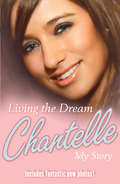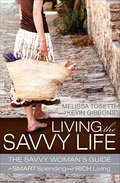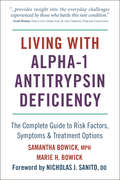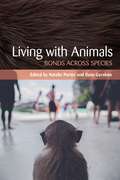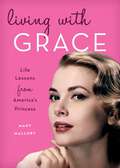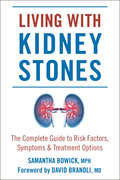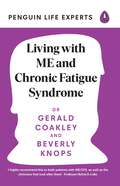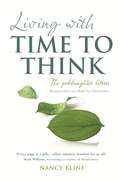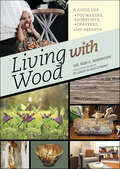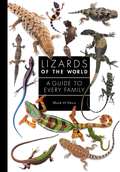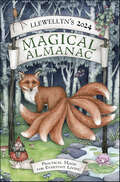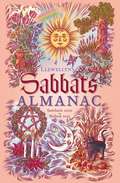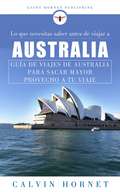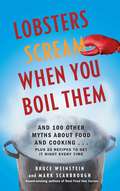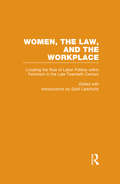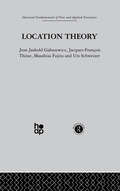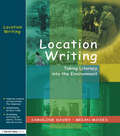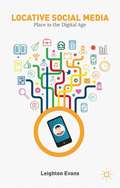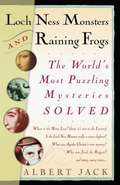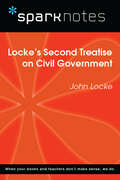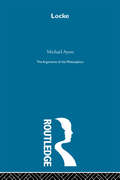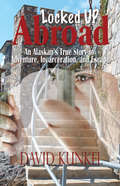- Table View
- List View
Living the Dream: My Story
by Chantelle HoughtonFrom girl next door to the nation's sweetheart, this is the story of Chantelle's spectacular rise to fame and celebrity. Told in her own words, Chantelle takes us on what has been a sometimes bumpy, but a truly magical journey.As a little girl growing up in Essex, Chantelle Houghton dreamed of becoming famous and living the life of a star. But never could she have imagined just how this dream would eventually come true, transforming her into one of Britain's most loved and talked about celebrities.Here, we learn how her family played a crucial role in helping to shape her dreams and aspirations from an early age. We hear of the difficult times growing up and how Chantelle was able to overcome these obstacles, eventually launching a career in modeling.But it was to be Celebrity Big Brother that would change the course of Chantelle's life forever. She tells of the moment she first discovered she'd been picked, what really went on behind the scenes - the clashes of personalities in the house, the fallings out... and, of course, her falling in love with Preston.Winning Big Brother was a defining moment, and the madness that followed in those first few days outside of the house was to be just the beginning of Chantelle's new dream life. Learning to become accustomed to her new found fame hasn't been straightforward, but Chantelle has always kept her feet firmly on the ground. But it has been her love for Preston that has been the real fairy tale in Chantelle's extraordinary journey. She tells how their love grew away from the glare of paparazzi, and how this whirlwind romance ended up becoming the wedding of the year. In this honest and open autobiography, Chantelle shares her secret hopes and dreams for the future and looks back on the past year and reflects on just what an amazing fairy tale it's been.
Living the Savvy Life: The Savvy Woman's Guide to Smart Spending and Rich Living
by Melissa Tosetti Kevin GibbonsLearn to master your finances with this practical guide full of tips and techniques that help you live rich while spending less. Money isn&’t the most important thing in a woman&’s life—but it effects every aspect of how we live. So if you want to enjoy the best of life, it&’s important to be money savvy. Living the Savvy Life teaches you how to be mindful about money so that you have it when you need it—and also when you truly want to splurge or treat yourself. Living the Savvy Life isn&’t about being a cheapskate, a miser, or a tightwad. It&’s about having security and peace of mind by spending less than you make. It&’s about knowing where you stand financially on a daily basis so you can make intelligent fiscal decisions. It&’s about cooking at home more often so you can afford an occasional dinner at your favorite restaurant. It&’s about having a wardrobe made entirely of clothes that fit and look great on you. It&’s about enjoying your time off because you planned for it and know you can &“afford it.&” It&’s about attaining and maintaining a balance that can sustain the life you love.
Living with Alpha-1 Antitrypsin Deficiency: Complete Guide to Risk Factors, Symptoms & Treatment Options (Living with)
by Samantha Bowick Marie BowickA knowledgeable handbook with a patient's perspective for those afflicted with the incurable disease known as Alpha-1 Antitrypsin deficiency (A1AD).Alpha-1 Antitrypsin deficiency (A1AD) is a rare genetic, incurable disease which causes the liver to not produce enough of a certain protein that protects and keeps the lungs functional. 100,000 people in the United States have A1AD and 19 million more are carriers for the disease. Since it's so rare, the information available about A1AD has been lacking especially for those suffering unknowingly with the disease. Living with Alpha-1 Antitrypsin Deficiency offers the most up-to-date and comprehensive information on this illness and includes first-hand experience from someone managing the disease. Living with Alpha-1 Antitrypsin Deficiency also includes expert advice from doctors and researchers tackling the disease, with tips on recognizing symptoms and getting the most effective help possible.
Living with Animals: Bonds across Species
Living with Animals is a collection of imagined animal guides—a playful and accessible look at different human-animal relationships around the world. Anthropologists and their co-authors have written accounts of how humans and animals interact in labs, in farms, in zoos, and in African forests, among other places. Modeled after the classic A World of Babies, an edited collection of imagined Dr. Spock manuals from around the world—With Animals focuses on human-animal relationships in their myriad forms.This is ethnographic fiction for those curious about how animals are used for a variety of different tasks around the world. To be sure, animal guides are not a universal genre, so Living with Animals offers an imaginative solution, doing justice to the ways details about animals are conveyed in culturally specific ways by adopting a range of voices and perspectives. How we capitalize on animals, how we live with them, and how humans attempt to control the untamable nature around them are all considered by the authors of this wild read.If you have ever experienced a moment of "what if" curiosity—what is it like to be a gorilla in a zoo, to work in a pig factory farm, to breed cows and horses, this book is for you. A light-handed and light-hearted approach to a fascinating and nuanced subject, Living with Animals suggests many ways in which we can and do coexist with our non-human partners on Earth.
Living with Florida’s Atlantic Beaches: Coastal Hazards from Amelia Island to Key West
by William J. Neal Kenyon C. Lindeman Orrin H. Pilkey Jr. David M. Bush Norma J. Longo John D. Congleton Deborah F. Pilkey Luciana S. EstevesFrom Amelia Island just south of Georgia to Key West's southern tip, beaches are one of Florida's greatest assets. Yet these beaches are in danger: rapid structural development on a highly erodible coast make them vulnerable to some of nature's greatest storms. The same development that has been driven by the attraction of beautiful beaches and coastal amenities now threatens those very resources. In turn, coastal structures are at risk from sea-level rise, shoreline retreat, winter storms, and hurricanes. Most of the methods for reducing losses associated with storms protect property only in the short term--at a growing cost in dollars and loss of natural habitat in the long term.Living with Florida's Atlantic Beaches is a guide to mitigating or reducing losses of property, human life, and natural resources by living with, rather than just at, the shore. This illustrated volume provides an introduction to coastal processes and geology as well as a brief history of coastal hazards and short-sighted human responses. This is the first volume in the Living with the Shore series to discuss the significant long-term impact of dredge-and-fill beach construction on living marine resources. Guidance is provided for long-term risk reduction in the form of tips on storm-resistant construction and site evaluation; maps for evaluating relative vulnerability to hazards are also included. A brief review of coastal regulations will help property owners understand and navigate the various permit requirements for developing coastal property. Living with Florida's Atlantic Beaches is an invaluable source of information for everyone from the curious beach visitor to the community planner, from the prudent property investor to the decision-making public official.
Living with Grace: Life Lessons from America's Princess
by Mary MalloryPoised, cultured, and unforgettable, Grace Kelly had the aura of a princess, even before she was crowned. She exuded grace, polish, flair, and serenity as a fashion icon, actor, and humanitarian. Living with Grace is a captivating look at this elegant woman who has been an inspiration for many and whose legacy enlightens a new generation of fans. Seldom seen photos and outtakes are complemented by inspiring quotes from and about Grace and the famous roles she played. These words and images highlight what made her so iconic on film and in life.
Living with Kidney Stones: Complete Guide to Risk Factors, Symptoms & Treatment Options (Living with)
by Samantha BowickTHE MOST UP-TO-DATE INFORMATION ON TREATING KIDNEY STONESLiving with Kidney Stones is a health resource for anyone who has ever suffered with the pain of kidney stones.One in 10 individuals will suffer from kidney stones at some point in their life. Composed of hard, painful mineral deposits forming inside the kidneys, these stones are both crippling and potentially chronic. Thankfully, patients can take action to reduce their chances of developing or redeveloping kidney stones by following a good diet, observing proper self-care, and adopting a comprehensive wellness plan.To that end, Living with Kidney Stones offers the most up-to-date information on this illness, paired with heartfelt insight from an actual kidney stone sufferer.Living with Kidney Stones also includes:• Easy-to-understand information on types and causes of kidney stones• The latest information on kidney stone testing• Traditional and alternative options for a broad, full-body approach to wellness• Guidance on self-care techniques for patients, families and caregivers• Valuable medical and community resources for kidney stone sufferersLearning to manage your risk factors for kidney stones can seem overwhelming, but by taking everything one day at a time and making sure you&’re provided with the care and support you need, you can minimize your risk while maximizing your quality of life. Don&’t just live with kidney stones—live well.
Living with ME and Chronic Fatigue Syndrome (Penguin Life Expert Series #6)
by Dr Gerald Coakley Beverly KnopsChronic fatigue conditions are some of the most frustrating, life-altering and stigmatized illnesses, so why are they still so poorly understood?ME/CFS affects roughly 17 million people worldwide. Medicalscience still cannot explain why some people get chronic fatigue syndromes and, distressingly, there are few effective treatments. While many people with ME/CFS are able to live a fairly normal life, a significant minority have symptoms so severe that they are confined to their house, or even their bed, and suicide rates are well above the national average.Living with ME and Chronic Fatigue Syndrome, by consultant rheumatologist Dr Gerald Coakley and occupational therapist Beverly Knops, is a much-needed, evidence-based guide for people struggling with ME/CFS - as well as their friends and family - that provides practical information and accessible advice on how to manage and live with this challenging condition, at all stages of severity. It will explore:- The causes and management options for ME/CFS- The impact of the condition on work, education and emotional wellbeing- The importance of a balanced, nutritious diet in managing your symptoms- Post-Viral Fatigue Syndrome (PVFS) and other fatigue-related syndromes- Advice for carers and questions to ask your doctor- Life after ME/CFS This essential, concise book, and its empowering patient stories of hope, will equip readers with the knowledge, strategies and support to navigate and manage this challenging condition.
Living with Schizophrenia: A Family Guide to Making a Difference (A Johns Hopkins Press Health Book)
by Philip G. Janicak Jeffrey RadoA concise, up-to-date consumer guide for people who have schizophrenia and their families.An estimated 51 million people worldwide have schizophrenia, 2.2 million of them in the United States. While early diagnosis and appropriate treatment improve the long-term prognosis, schizophrenia is a disease that is difficult to manage. In Living with Schizophrenia, Drs. Jeffrey Rado and Philip G. Janicak, specialists in treating people who have schizophrenia, offer an easy-to-read primer for people with the disorder, along with their families and other caregivers. Drawing on their combined sixty years of clinical and research experience, Drs. Rado and Janicak define schizophrenia and explain what is known about its causes discuss the difference between negative symptoms (such as lack of emotion and social withdrawal) and positive symptoms (such as hallucinations, delusions, and thought disorders) describe medication and psychosocial and behavioral treatments—and the importance of early diagnosis and treatment for better long-term outcomes explain what people with schizophrenia and their families can do to help keep the person well explore how schizophrenia affects the entire family detail medical conditions that people with schizophrenia are more likely than other people to have—including heart disease, obesity, and diabetes offer key takeaway points for every topicDesigned for the lay reader and based on the most recent medical literature, Living with Schizophrenia offers information and understanding to help people coping with this often misunderstood disorder to best achieve recovery and healing.
Living with Time to Think: The Goddaughter Letters
by Nancy KlineNancy Kline's Time To Think process builds an independent thinking culture in organisations and relationships. Over many years Nancy has refined this highly acclaimed system called the Thinking Environment. It identifies 10 behaviours that dramatically improve the way people listen, think and interact with one another.In this new book Nancy takes her thinking into a more personal sphere. Through a series of letters to her three goddaughters she addresses the fundamental questions of how we can live well, find meaning in our lives, and be happy. Applying the Thinking Environment philosophy, she demonstrates how thinking for ourselves underpins successful in all dimensions of life. From the Amy Question: 'what do you know now, that you are going to find out in a year?, to the power of expressing a complex idea idea in one sentence, to the generative invitation: 'what do you think?', she offers deeply stimulating, inspiring ways to the way we think - and live.
Living with Wildfire: A Homeowner's Handbook
by Maureen GilmerIn Living with Wildfire (first published as The Wildfire Survival Guide), gardening expert Maureen Gilmer shares proven ways to save your home, property, and life with wildfire-resistant landscaping and fire-prevention techniques. Discover how to create bands of protection by choosing fire-resistant plants, manage native vegetation, prevent erosion and mudslides, and learn about:Wildfire dynamics and safeguarding your home against themWater storage and delivery in any emergencyCreating a defensible space for you and firefightersIncluded is updated information on insuring your property, selecting your home site, packing an emergency kit, and getting public and private assistance. With easy-to-follow diagrams, instructional photographs, and landscaping plans, you&’ll have all the resources necessary to get through fire season and keep your home standing.
Living with Wood: A Guide for Toymakers, Hobbyists, Crafters, and Parents
by Dr. Seri C. RobinsonA comprehensive guide for wood workers of all ages that covers the science behind wood, its many uses, and optimal care. For anyone who has ever used, owned, or been curious about wood of any kind, this guide offers a fantastic summary of the science behind the material&’s anatomy, chemistry, and general upkeep. With the practical and accessible information presented here, you&’ll never have difficulty deciding what wood to work with or how to clean your boarded floors again. Living with Wood covers a broad range of topics, including best uses of wood in the home, finishing and coloring, woodworking machines, and unsafe woods. Whether you&’re building furniture, getting crafting, or caring for wooden antiques, this is your ideal guide to the most versatile, reliable, and beautiful material ever known.
Lizards of the World: A Guide to Every Family
by Mark O'SheaA lavishly illustrated overview of the world’s lizardsLizards are one of nature’s great success stories: survivors from the time of the dinosaurs, they have taken advantage of almost every habitat on earth, from tropical rainforest to Arctic tundra and even our homes. From chameleons and skinks to geckos and iguanas, there are close to 7,000 species of lizards around the world. This expert guide explores their extraordinary diversity and adaptations.Lizards of the World features an in-depth introduction covering the evolution, anatomy, and lifestyle of lizards, followed by profiles of species from every family, accompanied by stunning color photographs. This invaluable guide highlights the enormous range of habitats, appearance, and activity among lizards. Many thrive in extreme conditions, and have adapted to keep cool, warm, or hydrated. Some can protect themselves by changing color to blend in with their surroundings, while others have fringed toes enabling them to run across sand, or can parachute out of a predator’s reach. Covering diet and reproduction as well as defense strategies and conservation, Lizards of the World showcases the unique natural history and beauty of these remarkable creatures.More than 200 detailed photographic images80+ lizard families and subfamiliesExploration of lizard biology, behavior, habits, and distributionBroad coverage and in-depth treatment by a world-renowned herpetologist
Llewellyn's 2024 Magical Almanac: Practical Magic for Everyday Living
by LlewellynFor over three decades, this almanac has provided spells, rituals, and ideas that inspire practitioners of all levels to deepen their magical practice. You'll enjoy two dozen articles, grouped by element, that improve your connection to natural energies and enrich your life throughout the year. Well-known contributors offer their insights on many topics, including:Egg Magic • Uncrossing Spells • Ozark Protection Magic • Yoga for Sleep • Magical Infusions • Herbal Allies for Astrological Transits • Working with Local SpiritsYou'll also find a section on coloring magic, three spells to accompany the coloring pages, a calendar section with numerous holidays and correspondences, and more.
Llewellyn's Sabbats Almanac: Samhain 2010 to Mabon 2011
by LlewellynCelebrate each season of the Witches' year with rituals, recipes, and crafts. Discover new and unique ways to follow the Wheel of the Year and enrich your spiritual life with this essential resource for celebrating the eight sacred Wiccan holidays. From seasonal crafts to time-honored customs, this handy almanac offers an abundance of meaningful ways to empower your own celebrations. Your favorite Wiccan and Pagan authors offer rituals, craft activities, history and lore, plus a variety of family-friendly ideas for discovering the gifts and lessons of each Sabbat and season: Simple recipes for tasty holiday appetizers, entrees, beverages, and desserts; Information on full and new moons and major planetary influences so you can easily plan rituals according to cosmic energies; A journal page for each Sabbat so you can keep a record of memorable events or insights gained Samhain 2010 to Mabon 2011.
Lo que necesitas saber antes de viajar a Australia
by Calvin HornetDisfrutemos un poco del atractivo del país. Más de 20,000 millas de costa virgen, una serie de ciudades basadas en el ingenio y la intriga, la fauna endémica saltando por todas partes ... Aquí es donde se encuentra el monolito más grande del mundo, es el arrecife más largo, la selva más antigua, la cultura y una definición completamente nueva de desierto deshabitado. Con Australia, nunca hay un debate sobre si quieres ir. Es difícil encontrar un alma en el planeta que no esté inspirada por el pensamiento de esta inmensa nación isleña. La pregunta es más sobre cómo transformar Australia de la fantasía a la realidad. Primero son los aspectos prácticos. Simplemente volar por el país lleva cinco horas, nada más que paisaje chamuscado debajo de las puntas de las alas. Incluso en la siempre popular costa este, puede conducir durante horas sin ver nada más que las plantaciones de azúcar y el extraño canguro. El segundo es el costo. La transformación de Australia de una zona rural accidentada a una nación sofisticada no conoce fronteras, y el aumento de los costos tienen muchos visitantes que sobreviven con el vino en caja y los sándwiches de mermelada.
Lobsters Scream When You Boil Them
by Bruce Weinstein Mark ScarbroughIs the five-second rule for real? Will eating carrots improve your eyesight? Is your cookware a health hazard? Do spicy foods cool you down? Has your grandmother been lying to you all these years? No, no, no, no, and . . . probably. In this entertaining and informative reference guide, award-winning cookbook authors Bruce Weinstein and Mark Scarbrough take on more than one hundred popular kitchen myths and dish up answers to all your burning questions about food science and lore. No longer must you wait for your butter to reach room temperature before you bake or panic because you forgot to soak your dried beans for dinner. This handy book explains how knowing the truth behind these urban legends can help you be a better chef in your own home and offers twenty-five delicious recipes so you can practice. Whether you're a serious foodie, an avid dieter, a trivia lover, or are just searching for the secret to the perfect cup of coffee, Lobsters Scream When You Boil Them is essential countertop reading and a whole lot of fun.
Locating the Role of Labor Politics within Feminism in the Late Twentieth Century: Women, the Law, and the Workplace (Controversies in Constitutional Law)
by Sybil LipschultzEqual rights for women in the workplace is a critical aspect of the twentieth century civil rights movement, as well as an issue of academic and public interest. Bringing together legal rulings and commentary, this three-volume collection documents the development of legal protections for women in the workplace. The comprehensive coverage encompasses the major legal and constitutional issues, including the legal arguments that lead to the reduction of working hours for women and the argumentation that framed the debates over minimum wage legislation. The set also presents more contemporary issues of gender equality versus gender difference, in matters such as maternity leave and health hazards in the workplace for pregnant women. As the interest in the intersection of law and women's studies surges, this important new collection will become an essential guide to students and scholars, as well as lay readers. This volume is available on its own or as part of the three-volume set, Women, the Law, and the Workplace. For a complete list of the volume titles in this set, see the listing for Women, the Law, and the Workplace [0-415-94280-2].
Location Theory
by J. GabszewiczAnalyses the economic theory of urban land use in both its positive and normative aspects.
Location Writing: Taking Literacy into the Environment
by Brian Moses Caroline DaveyFirst Published in 2004. Routledge is an imprint of Taylor & Francis, an informa company.
Locative Social Media
by Leighton EvansLocative Social Media offers a critical analysis of the effect of using locative social media on the perceptions and phenomenal experience of lived in spaces and places. It includes a comprehensive overview of the historical development of traditional mapping and global positioning technology to smartphone-based application services that incorporate social networking features as a series of modes of understanding place. Drawing on users accounts of the location-based social network Foursquare, a digital post-phenomenology of place is developed to explain how place is mediated in the digital age. This draws upon both the phenomenology of Martin Heidegger and post-phenomenology to encompass the materiality and computationality of the smartphone. The functioning and surfacing of place by the device and application, along with the orientation of the user, allows for a particular experiencing of place when using locative social media termed attunement, in contrast to an instrumentalistconception of place.
Loch Ness Monsters and Raining Frogs: The World's Most Puzzling Mysteries Solved
by Albert JackFOOLED BY FABLES? LED ON BY LEGENDS? MYTH-GUIDED? WONDER NO MORE, MYSTERY-PHILES: THE TRUTH IS IN HERE! What in the world (or out of it) made those giant crop circles? Did skydiving skyjacker D. B. Cooper really get away with it? Is Bigfoot a big fake? Are ETs just BS? If you're tired of scratching your head over persistent puzzlers like these, mystery-buster Albert Jack has the cure for your quizzical itch. He's gone hunting for the truth behind more than thirty of the most famous and baffling conundrums in history. Did a conspiracy or a calamity kill Marilyn Monroe? Is the Bermuda Triangle a tropical tall tale? Was a dead Paul McCartney replaced by a doppelgänger? How did Edgar Allan Poe meet his doom? In quick-witted entries on each enigmatic topic, Loch Ness Monsters and Raining Frogs offers answers certain to surprise, enlighten, amuse, and perhaps disappoint true believers. But Albert Jack never fails to fascinate and entertain as he spills the beans about the odd, the eerie, and the (no longer) unexplained.
Locke's Second Treatise on Civil Government (SparkNotes Philosophy Guide)
by SparkNotesLocke's Second Treatise on Civil Government (SparkNotes Philosophy Guide) Making the reading experience fun! SparkNotes Philosophy Guides are one-stop guides to the great works of philosophy–masterpieces that stand at the foundations of Western thought. Inside each Philosophy Guide you&’ll find insightful overviews of great philosophical works of the Western world.
Locke-Arg Philosophers (Arguments Of The Philosophers Ser. #12)
by Michael AyersFirst published in 1999. Routledge is an imprint of Taylor & Francis, an informa company.
Locked Up Abroad: An Alaskan's True Story of Adventure, Incarceration, and Escape.
by David KunkelLocked Up Abroad is a true story of a young drug dealer and his friend turned smugglers. His shoe-string caper covered 6,000 miles from Europe to Afghanistan to Greece. The high of quick money morphed into capture. A Corrupt judicial system introduced them to a hellish 200-year-old island prison fortress. The only way out of the this devil's den was escape. Locked Up Abroad is a convincing statement of the perils of illegal drugs and unlawful activity. Only the author escaped. His companions either died in prison or are still doing time.
